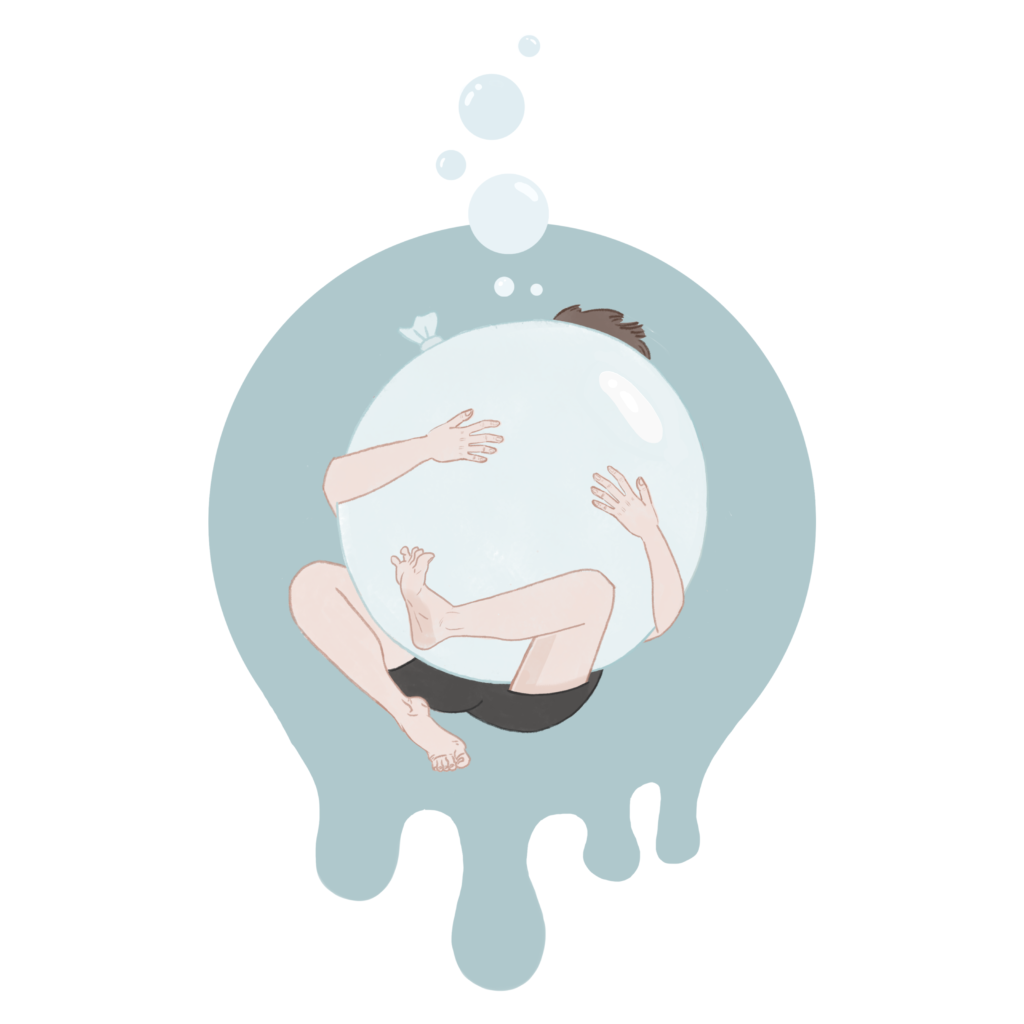





Countering Avoidance During the Chronic Traumatic Stress History Copy
Avoidance is a natural response after trauma. Emotionally, cognitively, physiologically, or behaviorally distancing oneself from painful experiences feels like a protective mechanism, but it actually makes trauma symptoms worse in the long term.
Avoidance can also present itself in the form of disorganization and compartmentalization. Our memories for a particular event can become disconnected from our feelings about the event, so the connections between all four corners of the square become shrouded.
One way to explain avoidance to children is using a metaphor of an ‘underwater balloon.’ It takes a lot of energy to constantly avoid feelings, like keeping a balloon under water in the pool. You can hold it for a couple of minutes, but doing it over several hours or days will get very, very tiring, and it’s often difficult to do anything else while actively avoiding. And, the ball will inevitably rise to the surface again.

One empirically validated way to counter avoidance is by approaching trauma content in a safe and structured environment, such as while creating the trauma narrative. Narrative exposure is a safe way for children to measuredly share the details of their history.
Taking the time to process and approach our thoughts, emotions, behaviors, and physiological reactions through storytelling, helps to reconnect and organize them. During these sessions, children will link their past experiences with their current functioning, making sense of the events and retelling them in a more coherent, integrative way—which helps counter the effects of avoidance.
Avoidance can be adaptive for children who are experiencing ongoing threats or danger. We do not seek to eliminate the vigilance stress response, but to help the child distinguish between real and perceived threats. If the child hears gunshots in their neighborhood, they should maintain their adaptive response—to immediately run and hide. However, we want to help the child eliminate the same response if it happens in a non-threatening situation, such as hearing fireworks. Constructing the child’s narrative with a supportive individual can help children evaluate these aspects of their history. For example, they may be able to state, “Because of that time when I got really sick while my mom was away, I continue to worry about my health when she is not around” or “Because I got attacked and hurt by older kids when I was young, I sometimes get angry very quickly and feel like hitting things.” This will help the child make a connection between an event and their response (the CCT Square).
Another way to reduce or minimize avoidance during the life timeline and narrative processes is to make these experiences as predictable as possible for the child, and to give them as much agency as possible over the process. It is important to carefully prepare the child by letting them know what to expect (e.g., they may feel sad, anxious, or angry at some point) and engaging them in identifying what supports they might need (e.g., what coping skills they plan to use)—this increases children’s sense of empowerment. Using the feelings thermometer is particularly important for helping the child to identify and express what they are feeling during these processes.
